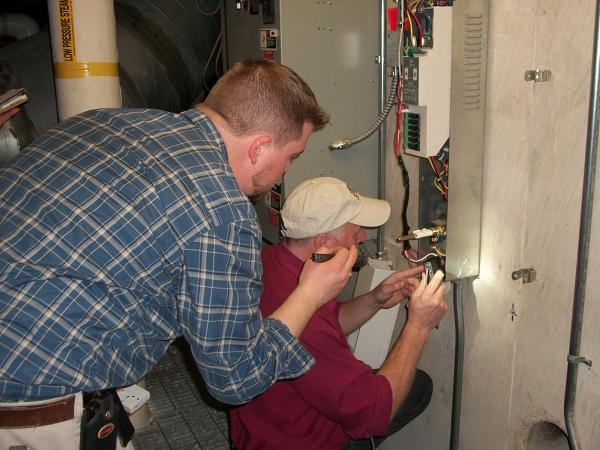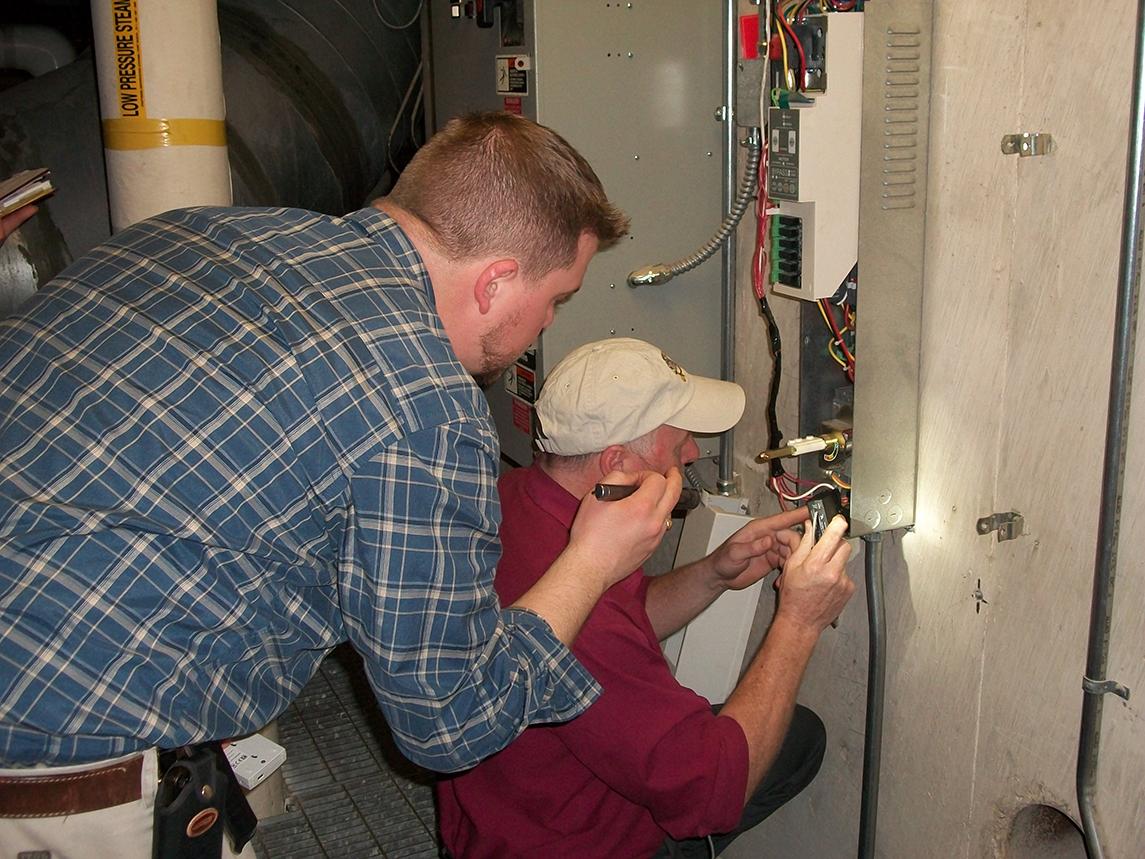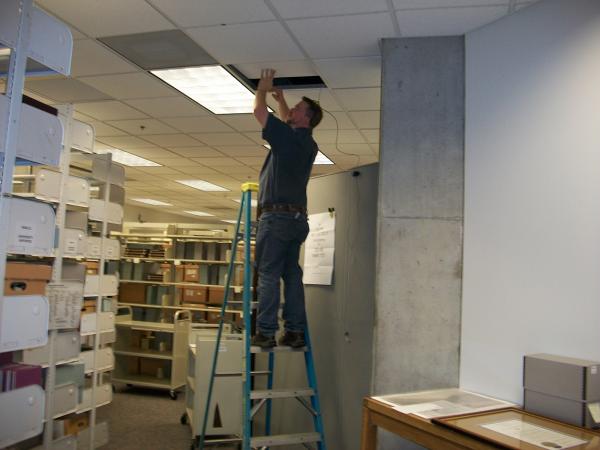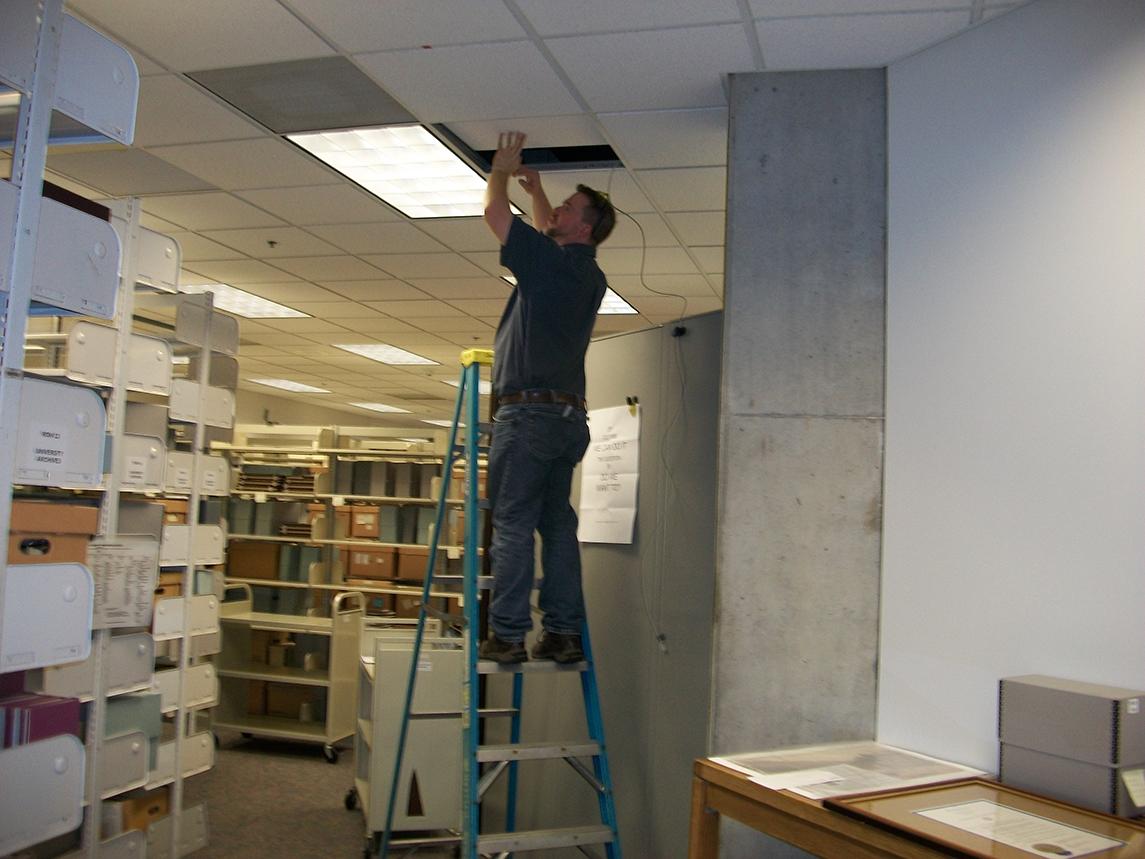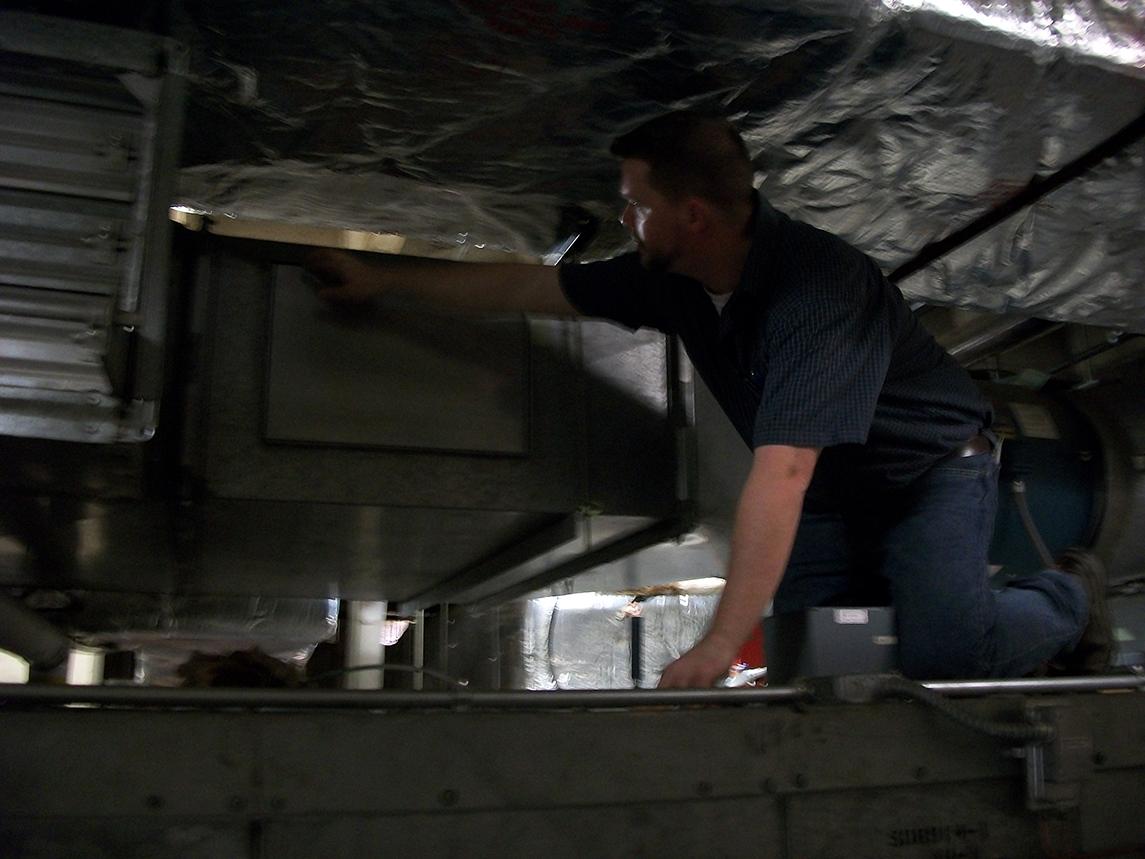Planning for Preservation with a Great Team

Team discussion during the second site visit.
Image courtesy Lois Hamill

Team discussion during the second site visit.
Image courtesy Lois Hamill
The second in a series of posts looking at how sustainability for collections can also be sustainable for institutions.
It seems like corny quotes about the value of teamwork are ever present. However, it is rare to assemble a successful team, striking the delicate balance of necessary time requirements and the subtleties of interpersonal dynamics.
Effective teamwork is a common theme in successful planning-level grants, which can create time and funding to get diverse voices at the table and lay a solid foundation for a large future project. Northern Kentucky University’s W. Frank Steely Library embarked on a NEH Sustaining Cultural Heritage Collections planning grant in fall 2012 to understand better their Special Collections and University Archives’ preservation environment and explore options for improvement.
Lois Hamill, project director, writes in a white paper published at the end of the grant period that “the first accomplishment was bringing together the collective expertise” of their team and “to balance these different perspectives, enabling each to contribute without overshadowing the other.” [1] Hamill’s team included internal and external specialists who could inform the varied components of the project, which encompassed gathering usable data on the preservation environment of the library’s Special Collections and University Archives and energy usage of the HVAC equipment. They also planned to experiment with ways to improve the storage environment and achieve energy efficiency, informing a long term plan.
The key team members included:
University Archivist and Assistant Professor of Library Services, who served as the project director and brought her knowledge of the relevant collections and spaces.
Representatives from the University Architect’s Office. It was a happy coincidence that one of these members was trained as an engineer and could be a second voice on related technical matters.
Representatives from Campus HVAC Systems Maintenance, who advised on HVAC operations and assisted with the implementation of experimental measures.
Outside Preservation Environment Consultant, who advised on mechanical system performance and energy-saving measures from a material preservation perspective. He implemented data measurement systems, analyzed the data, and created a report at the end of the project.
Outside Engineering Consultants from the firm that designed the HVAC system, who contributed their expertise for mechanical experiments and, eventually, designs for an upgraded system.
Over the course of the grant period, the preservation environment consultant visited three times, creating an occasion on each visit for a full team meeting. The first time, they installed environmental monitors throughout the library building, along with several energy consumption monitors within the system being studied. On the second visit, the team discussed the data and experimental operational changes. They determined to try system shut-downs on a nightly schedule and reducing the amount of outside air brought into the system using dampers, as well as conducting a balancing study on the sources of return air to the HVAC.
This planning period resulted in operational changes that will improve or do no harm to the preservation environment and could save up to 33% in energy costs. However, the group also came to the conclusion that the Archives and Special Collections needs its own HVAC system in order meet the needs for both preserving collections and assuring human comfort within the building.
Hamill reflects that “It is not all that common for HVAC specialists, their managers, engineers and archivists to talk to one another,” [2]and that all parties learned a great deal from each other during this planning project. She mentions, too, that “It has added to Special Collections and University Archives’ professional image within the community. This has potential beneficial implications as we work to acquire new collections and financial donations.” [3]
Do you have a long-term collections care goal that could benefit from a planning grant?
Who would you include on your team?
Learn from others! The white paper from this project and other NEH funded projects are available online in the Funded Projects Query.
[1] Lois Hamill, “W. Frank Steely Library Special Collections & Archives Sustainable Preservation Environment Planning Project White Paper,” 29 September 2014, p. 5.
[2]Hamill, p. 6
[3]Hamill, p. 9


